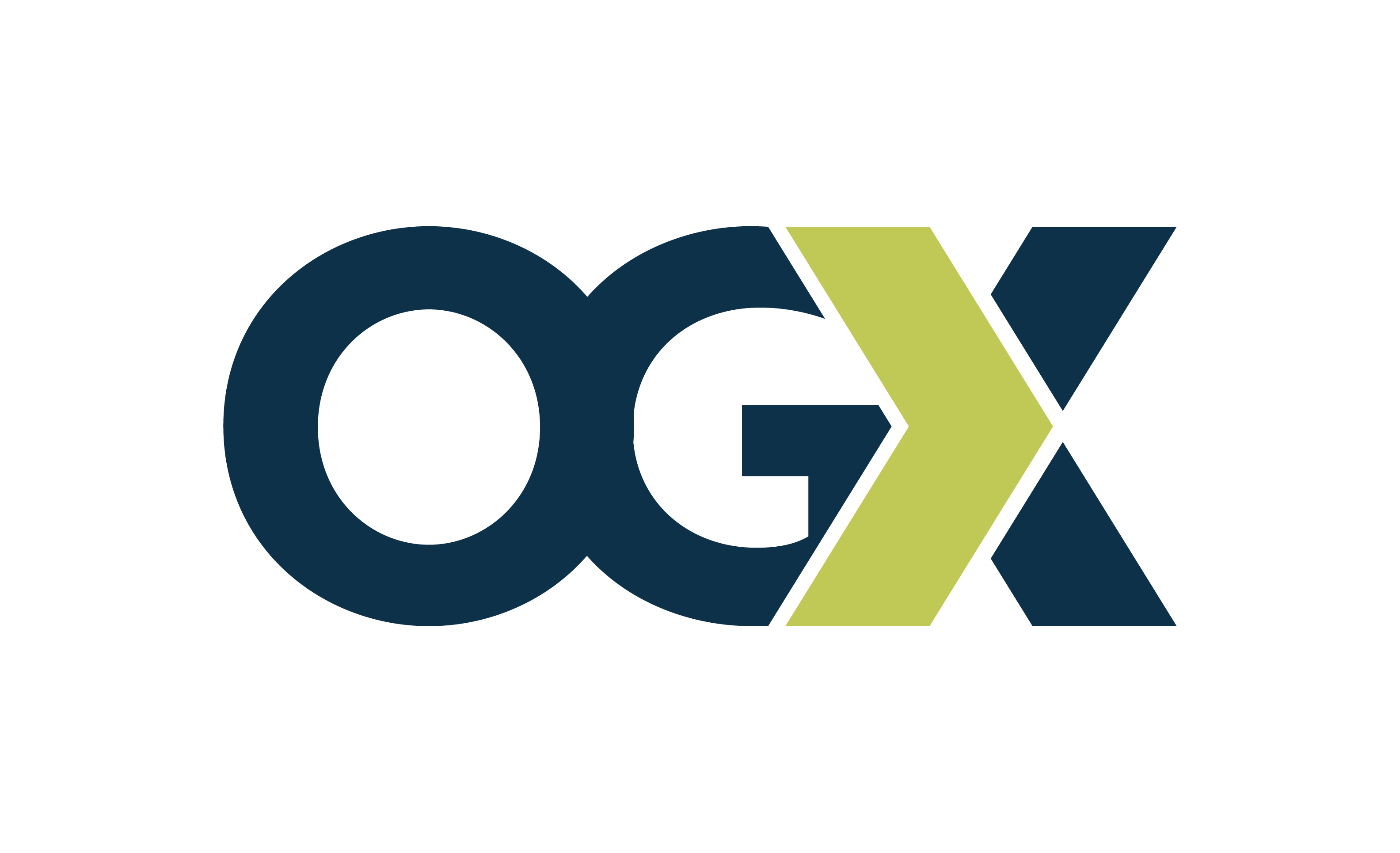[vc_column_text]Since the onset of the COVID-19 pandemic, the world has shifted. The last few months have dramatically changed industries and upended business models and strategies. Most importantly, they have altered societal norms and thrown us all into a very uncertain future.
According to renowned business coach Dan Sullivan, our world as we once knew it, has structurally and fundamentally changed forever due to COVID-19. Dan defines this shift by delineating three periods – Old Normal (life before COVID-19), Scary Times (the current uncertainties we are living in), and New Normal (whatever life will look like after COVID-19).
Just like Sullivan’s New Normal, this post-COVID-19 era is often also referred to as the “Next Normal.” Businesses, organizations, and individual lives have been profoundly changed economically and socially due to the shocks delivered to the global economy by COVID-19, and we are all learning a new way to move forward.
Over the past seven weeks, I have spent countless hours facilitating and participating in executive conference calls and round table discussions with IT leaders and other business executives within the public, private, and social good sectors. One recurring fact that executives are grappling with is how businesses need to take a new, more comprehensive approach to measure business performance in the Next Normal.
IT leaders have shown themselves to be some of the most capable role models in this pandemic, due to their facility for ensuring network and security protocols were quickly implemented, allowing for a seamless transition to remote work. Their success can be attributed to their roles carrying an inherent commitment to ongoing investment in business continuity and disaster recovery. Despite these successes, IT leaders, like their business counterparts, are looking for direction on the performance indicators they should be measuring.
Today, we will discuss nine critical performance measures IT leaders need to focus on in the post-COVID-19 world, and why these are deemed essential.[/vc_column_text][vc_column_text]
The Changing Landscape in the post-COVID-19 Era
It is often said that “what gets measured gets done” – regular measurement and reporting help organizations stay focused on getting the right information to the right people to make the right decisions, thereby ensuring the correct results are realized.
According to the ITRG, more than one in three IT departments still struggle to move beyond the most basic reporting capabilities. Unlike many other business units, traditional IT organizations often only focus on reporting operational performance metrics. With the advent of the current pandemic, when every business leader is forced to scrutinize budgets and justify spending, this approach has proved to be extremely limited. To this end, IT leaders need to create a new strategy and approach as to how they report on technology performance, one which positions them as strategic business partners, value creators, and revenue enhancers.
Based on our research and insights gathered from IT leaders, below are some critical measurements your IT department can leverage and manage in the post-COVID-19 world. Focusing on these will strengthen the case for the IT function being recognized as an essential strategic element of the business and a value creator rather than a cost center.[/vc_column_text][vc_column_text]
9 Critical Measurements Every IT Leader
Needs in the Post-COVID-19 World
[/vc_column_text][vc_row_inner column_margin=”default” top_padding=”3%” text_align=”left”][vc_column_inner column_padding=”no-extra-padding” column_padding_position=”all” background_color_opacity=”1″ background_hover_color_opacity=”1″ column_shadow=”none” column_border_radius=”none” width=”1/1″ column_border_width=”none” column_border_style=”solid”][text-with-icon icon_type=”font_icon” icon=”icon-chevron-right” color=”Accent-Color”]
Business Value
Moving into the post-COVID 19 era, IT will be in a great position to help shape and deliver business value and outcomes. These metrics help to analyze the value of IT contributions as they relate to strategic business objectives. They also help track the impact of IT contributions as they pertain to the creation of business value.[/text-with-icon][vc_column_text]
1 | 2 | 3 |
Percent of IT investment allocated to critical business initiatives | Customer Satisfaction score with IT service delivery (Ops, Applications, and Projects) | Percent of IT projects where business value is measured |
Reporting Cadence | Reporting Cadence | Reporting Cadence |
Quarterly – Annually | Annually | Quarterly – Annually |
Strategy and Governance
Having a well-defined IT strategy and governance program in place is extremely important for organizations that want to succeed in the post-COVID-19 era. Moving forward, businesses will need to have the utmost confidence in their company’s IT strategy and capacity to deliver accordingly. The increased numbers of people working from home is just one way our reliance on technology has been proven. These metrics help ensure that IT is aligned with business objectives to deliver on critical business initiatives.[/text-with-icon][vc_column_text]
1 | 2 | 3 |
Customer Satisfaction score with IT Governance decision-making process | Percent of business objectives addressed by IT strategy | Percent of business units with IT assigned Business Relationship Managers |
Reporting Cadence | Reporting Cadence | Reporting Cadence |
Quarterly – Annually | Monthly – Quarterly | Monthly – Quarterly |
Financial
COVID-19 has increased scrutiny of organizations’ expenditures and investments. Stakeholders, employees, and customers all want to know that companies are doing everything possible to protect jobs, profits, and long-term relationships. IT leaders need to have basic financial metrics to ensure proper stewardship of the company’s or agency’s operating expenditures and capital investments in technology.[/text-with-icon][vc_column_text]
1 | 2 | 3 |
Percent of IT investment to run, grow, and transform the business | Percent of IT spend vs. plan (Operational & Capital Expense variance) | Total amount of savings delivered by IT projects and services |
Reporting Cadence | Reporting Cadence | Reporting Cadence |
Quarterly – Annually | Monthly – Quarterly | Quarterly – Annually |
IT Delivery and Innovation
IT leaders will be expected to deliver high-quality, innovative solutions and projects on-budget, on-schedule, and on-spec during this pandemic and beyond. These key performance indicators help monitor the efficacy of project execution and the ongoing delivery of business-facing services. These metrics can also help measure and evaluate labor and resource strategies.[/text-with-icon][vc_column_text]
1 | 2 | 3 |
Number of business-facing services meeting SLA | Percent of projects on-budget, on-schedule, and on-spec | Percent of critical business projects impacted by lack of IT resources |
Reporting Cadence | Reporting Cadence | Reporting Cadence |
Quarterly – Annually | Monthly – Quarterly | Monthly – Quarterly |
People and Resources
Like most business executives, IT leaders know that their staff and resources are their most valuable assets. Now more than ever, it is important to track and efficiently manage all available IT resources. These metrics help ensure that staffing and resource utilization are working effectively.[/text-with-icon][vc_column_text]
1 | 2 | 3 |
Satisfaction score with current IT staffing model and organizational model | Number of critical open positions within IT required to staff critical business initiatives | Percent of IT resource utilization on business-facing projects and O&M support |
Reporting Cadence | Reporting Cadence | Reporting Cadence |
Monthly – Quarterly | Monthly – Quarterly | Quarterly – Annually |
IT Security and Risks
As corporate networks continue to grow in size and complexity, their security becomes a critical concern. Vulnerabilities which can be exploited by phishing attacks and other cybercrimes are regularly discovered in software applications – being able to evaluate the state of organizational IT security helps to determine where resources are needed to combat ongoing threats.[/text-with-icon][vc_column_text]
1 | 2 | 3 |
Number of vulnerabilities/firewall breaches detected | Number of unauthorized devices discovered on the network | Percent of critical systems covered by business continuity and disaster recovery plan |
Reporting Cadence | Reporting Cadence | Reporting Cadence |
Monthly – Quarterly | Monthly | Annually |
IT Operations
Moving forward, new levels of efficiency and resilience will be required from IT operations. Leaders must ensure that their operation can reduce monitoring time and rapidly resolve complex problems. This will free up their team to focus on the issues that are most important to stakeholders.[/text-with-icon][vc_column_text]
1 | 2 | 3 |
Number of incidents resolved and average time to resolution (in minutes) | Number of times problems were caused by changes to infrastructure or application upgrades | Number of times performance SLAs were not met |
Reporting Cadence | Reporting Cadence | Reporting Cadence |
Daily – Weekly | Monthly | Monthly – Quarterly |
IT Infrastructure and Architecture
In order to ensure the success of all business operations, IT infrastructure and architecture must be functioning at an optimal level. These metrics help to evaluate a company’s IT resources and determine which upgrades will help achieve the best ROI for the business.[/text-with-icon][vc_column_text]
1 | 2 | 3 |
Customer Satisfaction score with infrastructure availability | Number of planned and unplanned upgrades | Infrastructure actual cost vs. target/benchmark |
Reporting Cadence | Reporting Cadence | Reporting Cadence |
Monthly – Quarterly | Monthly – Quarterly | Annually |
Applications
It is not just hardware infrastructure and architecture that is important. Companies need to be aware of those business applications that are helpful and those which do not meet benchmark expectations. These metrics help evaluate a company’s application portfolio and its overall efficacy. Only those that have been useful in achieving precise business objectives should continue to be supported.[/text-with-icon][vc_column_text]
1 | 2 | 3 |
Number of applications supported and percentage of overall application portfolio satisfaction | Percent of applications projects that are meeting benchmark expectations (budget, schedule, spec, and quality) | Total cost for business applications and services |
Reporting Cadence | Reporting Cadence | Reporting Cadence |
Monthly – Quarterly | Quarterly – Annually | Monthly |
5 Practical Steps to Successfully Implement
these Critical Performance Measures
DEFINE
The first step is to conduct a current state assessment of your organization’s performance management program. Define your program’s future state – scope, organizational mission, and goals. Align these with key business objectives, and ensure secure leadership alignment and commitment.
PLAN
Step two entails planning out your performance management program key processes and baseline current performance: design data repository, data storage, and training requirements. Most importantly, be sure to get employee acceptance.
EXECUTE
Step three – execute Metrics and KPIs development, identify cross-functional processes, and implement data integration. Align performance objectives to corporate strategy, financial management, and workforce.
MONITOR
Step four – Conduct quality management, quality assurance, and quality control on data, metrics, and KPIs to ensure that they are aligned and meeting the program’s stated objectives and intent. Build and deploy a continuous improvement plan to help ensure the long-term viability of your program.
REPORT
Step five – Generate performance reports for key stakeholders and decision-makers. Leverage Business Intelligence reporting capabilities to enhance reports and automation. Utilize dashboards to display relevant metrics and KPIs to improve the culture and long-term viability and success of the program.
Conclusion
As IT leaders navigate and adjust to the Next Normal, they must change how they report on their department’s performance. To get the best results from these metrics, there are a few best practices to keep in mind.
They should never be treated as something set in stone – they should be flexible, reviewed frequently, and refined as necessary to ensure they are measuring the right things and offering accurate results. IT leaders should make KPI review a ritual and ensure they are helping to communicate IT’s contribution and story effectively.
Finally, although the above-illustrated metrics and KPIs are driven by data, you should never expect perfection. When leveraging them, remember to keep it simple. They are designed to serve as a guide, but if you do not find them useful, use them as inspiration to create your own.[/vc_column_text][vc_column_text]
ABOUT THE AUTHOR
ALVIN MCBORROUGH
Managing Partner & CEO
OGx Consulting[/vc_column_text][vc_column_text]Alvin McBorrough is the Founder of OGx Consulting. He advises and works with executives and business leaders of leading organizations in the private and public sectors. His expertise spans the areas of strategy, business transformation, technology enablement, mergers and acquisitions, and private equity. Alvin is responsible for driving the firm’s strategy and stakeholder relationships including marketing, sales, and human capital development.
Before opening OGx in August 2011, Alvin was a Principal with Cisco Services with responsibility for service delivery in North America, Latin America, and parts of the Middle East. Prior to this leadership role, Alvin lead Global Operational Excellence at Level 3[/vc_column_text][vc_column_text]Communications (now CenturyLink). Alvin has also worked for AT&T, Comcast, BT, and the Government of the Republic of Liberia.
He holds an MBA from the University of Chicago, an MS in Telecom Management and Operations from the University of Denver, and a BA in History and Religion from the University of Ghana.
ABOUT OGx
OGx is a leading management and technology consulting firm focused on utilizing data-driven strategies to generate insights that drives transformation with the single purpose of helping our clients in the private and public sectors create, capture, and deliver sustainable value and results. For more information, visit www.weareogx.com[/vc_column_text]


